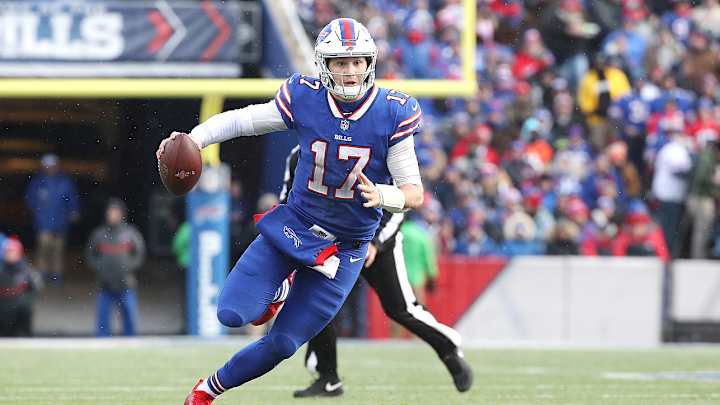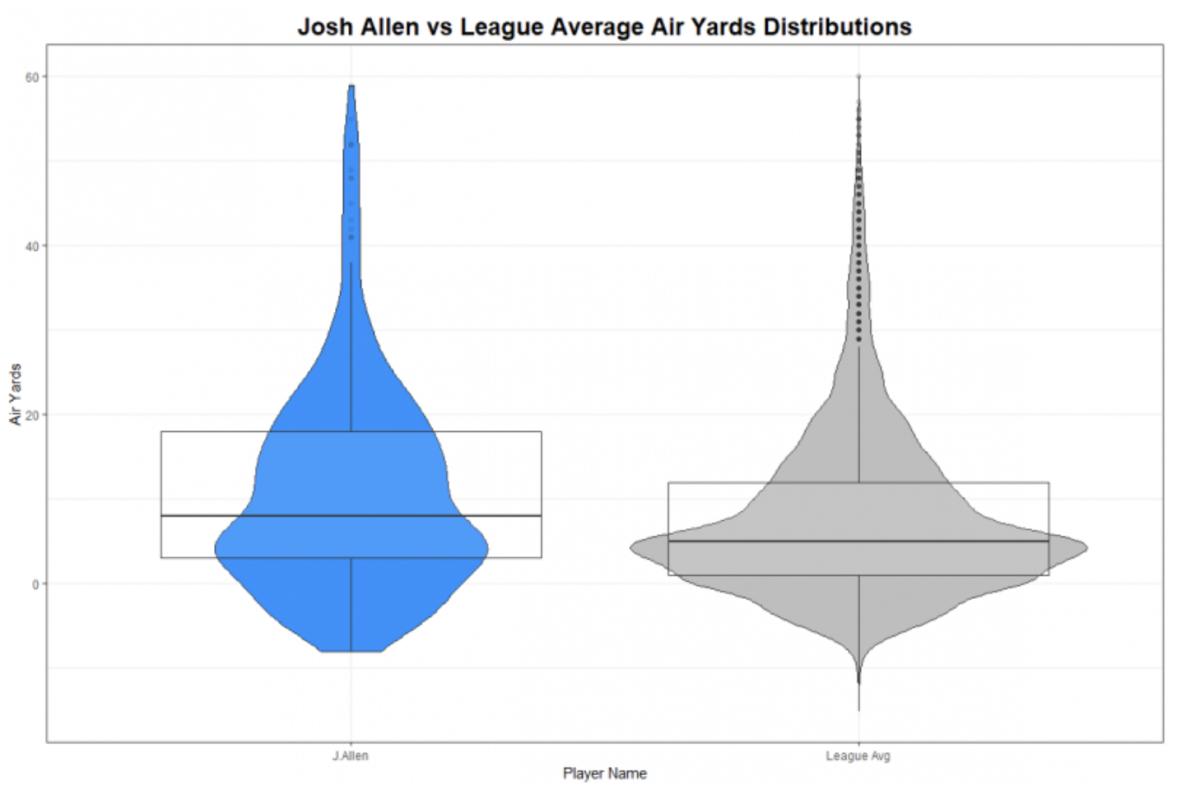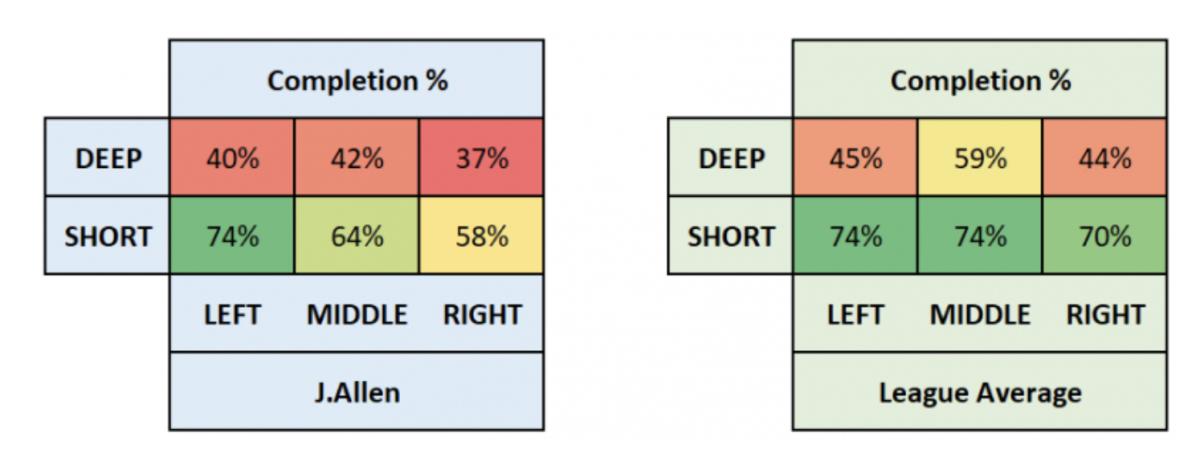A Little Growth and a Lot of Running Could Make Josh Allen a Fantasy Mainstay in 2019

Josh Allen had a, well, let’s call it an interesting season after being the seventh overall pick in the 2018 NFL Draft. He showed everyone that he wasn’t afraid to sling it all over the field or break the pocket. I don’t necessarily think Allen will be an above-average NFL quarterback, but that’s another debate. I do believe that he has the tools to be a proficient fantasy quarterback.
Fantasy managers want quarterbacks who take shots down the field. On average, deep attempts are more valuable than short and intermediate ones because of the attendant yardage and touchdown potential. Quarterbacks who also run the ball are even more valuable, especially in the modern game. Allen proved last year that he isn’t shy of the former, and is quite good at the latter, and that gives him a winning fantasy formula.
The best way to measure a quarterback’s downfield potential is with air yards, which quantify the exact distance the ball travels in the air from quarterback to pass-catcher. In 2018, Allen averaged 10.99 air yards per attempt, tops in the NFL. Allen had a deep-pass rate, defined as passes that traveled more than 15 yards in the air, of 28%. That, too, led the league. Below is a violin chart comparing Allen’s air yards distribution to the league average. The wider the violin, the more the event being measured occurred. The clear box represents the middle 50% of the data, or a rough average. The line inside the box is the median of all data points.

The chart makes clear how much more often Allen takes downfield attempts compared with the league average. Allen’s violin is much wider at the 20-yard mark, which suggests that he isn’t simply firing passes indiscriminately as deep as he can. That he’s more likely to take shots on deep outs and ins is as good an indication as any that he’ll continue attacking downfield more than the average quarterback. The upshot, however, is that these attempts have to be completed to register in fantasy leagues.
Below are Allen’s completion percentages compared to the league average for both deep and short passes to the left, middle, and right sides of the field.

As you can see, Allen struggled in virtually every segment of the football field compared to the league average, which isn’t uncommon for a rookie. Quarterbacks generally tend to thrive over the middle throwing seam routes to wide receivers and tight ends. The Bills addressed some of Allen’s needs by adding John Brown, a dangerous deep threat, and Cole Beasley, who’s adept at getting open on short and intermediate routes. Both of them should help improve Allen’s completion percentage, while Brown increases his ceiling thanks to his prowess down the field. If Allen can just complete a small percentage more of those downfield passes, which we should expect in his second year, his yardage numbers could take off.

Turning our attention to Allen’s legs, he averaged 7.7 rushes per start. This was the second-highest mark in the league for a quarterback, behind only Lamar Jackson. He put up 55 yards per game on those carries, and ran for at least 94 yards in four games. Extrapolate those rates over 16 games, and you get 123 carries for 880 yards. While those rates are likely unsustainable, even a slight regression keeps Allen as one of the most productive rushing quarterbacks in the league. Allen was the only quarterback in the top four in rushes per game who was not also in the top nine in fantasy points per game, only including starts. That bodes well for this season.
Add it all up, and it’s easy to make an argument for Allen as a regular fantasy starter in 2019. He may not be someone you want to roll out every week, but he’ll be a consistent streamer with a season-long QB1 ceiling.
